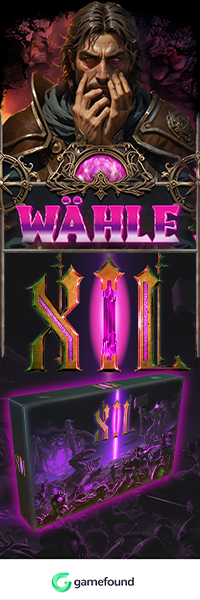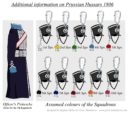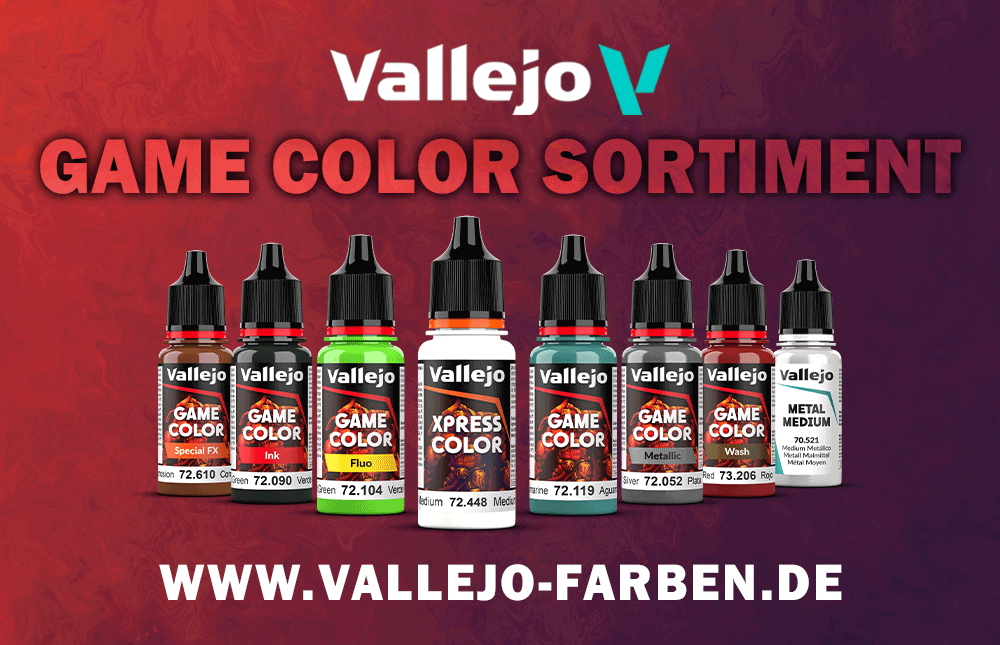Perry Miniatures: Neuheiten
Perry Miniatures präsentieren ihre Neuheiten auf Facebook.
Napoleonic Prussian Hussars 1806We now have eight codes of the Prussian 1806 Hussars available. As you can see most are amazingly painted by the very talented John Morris and Stephan Huber. There are more strings to Stephan’s bow, however. A little while ago he asked if we’d be interested in a painting guide for these hussars. Of cause we said ‘yes’ after seeing a trail plate. Working with Hans-Karl Weiss, who provided extra research material, Stephan produced this fantastic painting guide, which will go up on the website under ‘Articles’ in the next week or so.Prussian Army 180628mm figures designed by Alan PerryEP 28 Hussar command in mirlitons, galloping.EP 29 Hussars in mirlitons, shouldered swords, galloping.EP 30 Hussar command in shakos, galloping.EP 31 Hussars in shakos, shouldered swords, galloping.EP 32 Hussar command in peaked mirlitons, galloping.EP 33 Hussars in peaked mirlitons, charging.EP 34 Hussar command in milirtons, wearing pelisse, charging.EP 35 Hussars in milirtons, wearing pelisse, charging.Hussars of the Kingdom of Prussia 1806/1807 by Stephan HuberIn 1806 there existed 10 regiments of Hussars, all of 10 squadrons with the exception of 11th Hussar Regiment, which was only 5 squadrons strong and therefore usually known as battalion. The 9th Hussar Regiment was in fact not a Hussar regiment but the corps Torwarczys (15 squadrons) which will be covered separately. A 10 squadron strong hussar regiment was usually divided into two battalions of 5 squadrons each.Since 1796, the hussar regiments wore a Flügelmütze (winged cap/ Mirliton) – before a mix of busbies and winged caps. The mirliton was a blunt cone of felt, covered with a piece of cloth that could be lowered on parade occasions. In addition to hussar tassels, cords and a white plume was worn. Please note that the wings were all plain black. Only officers would have silver or gold wings, as well as some trumpeter had specially arranged winged caps. Actually, from 1805 all hussar regiments should have been equipped with the shako. However, only a few regiments succeeded in this until the campaign of 1806 (see uniform plate). Doepler only shows the 2nd, 6th, 10th and 11th regiment with a shako in 1806. There are some other sources giving the shako to the same or other regiments. Others like the 5th regiment received it later in the campaign, as it was stationed in East Prussia and did not take part in the disasters of autumn 1806.One must be aware that uniform items, just because they were newly decreed, were not immediately available. It was costly and labor-intensive, and the Prussian Kingdom was never in a wealthy state. There are also some reports of mixed headgear within the same unit; however it should be noted that there was no mixture of headgear on a squadron level.It seems that some units put peaks on their mirlitons around the time of 1806 and that trumpeters always wore the mirliton cap whether the unit was issued with shakos or caps.Squadrons were distinguished by the colour of their cords, flounders and tassels – while with the shako only the flounders were in squadron colours. Only for the first of Leib (life) squadron the colour white is known – for the others no pattern could be found and we chose to use as a hypothetical example the sword knot colour of a 10 squadrons strong Dragoon regiment.Here for example for Anspach-Bayreuth Dragoner Regiment of 1796:1st squadron (Leib-Schwadron) — white2nd squadron — yellow3rd squadron — green4th squadron — light blue5th squadron — red6th squadron —black7th squadron — dark blue8th squadron — carmine red9th squadron — orange10th squadron — violetSince the days of Frederic the Great, the NCOs had a woolen or cloth rosette on their mirliton cap. Colours varied from regiment to regiment:1st Regiment — green2nd Regiment — red3rd Regiment — yellow4th Regiment — light blue5th Regiment — white6th Regiment — yellow7th Regiment — light blue8th Regiment — madder red10th Regiment — dark red11th Regiment — white-blackWhen the shako was introduced only the flounders did show the squadron colour and the cords and tassels were otherwise white. Trumpeter (which held the ranks of NCOs) had different coloured rosettes (kind of cockade) on their caps:1st Regiment — red — white – red2nd Regiment — red3rd Regiment — yellow – red4th Regiment — light blue – red5th Regiment — red – white6th Regiment — yellow7th Regiment — light blue8th Regiment — madder red10th Regiment — dark red11th Regiment — red – greenNote that NCOs always wore a mixed tassel of white and black, officers silver mixed with black. Officers also wore a sash of white mixed with black and silver buttons (hollow cylindrical wooden shafts to hold the sash cords in place).I put more information on the uniform plates and I tried to go a bit more into detail about which regiment probably wore which headgear as some units had their individual looks. It is important to remember however that no exact information can be given and that I simply gathered all information from contemporary sources.The hussars wore their typical dolman and pelisse (black or white fur, NCOs sometimes had brown fur) uniforms. The regiments differed by the colour of their clothing, the number of buttons, the headgear, the lacing and the sabretache.NCOs most often had a lace in button colour along the cuffs and on the pelisse. Trumpeters had a special lace that differed not only in design from regiment to regiment but also in the way it was sewn on to the uniform.The hussars wore white riding trousers – in campaign however, buttoned overalls in the colour of the pelisse was worn.To save money due to the rise of cost of leather – shortly before 1806, the 6th, 10th and 11th Regiments received new, coloured woolen trousers with embroidery.The Officers’ uniforms had usually metal cords on the dolman and pelisse, according to button colour or a lace along the wings, or even gold or silver wings at the mirliton. On campaign they usually carried the field dress sabretache with the usual FWR cyphers and also had the campaigns saddle cloth. Most commonly however; to preserve the dolman and pelisse, a so called Piekesche was worn, mostly of dark blue wool and all cords and embroidery of silk and with facings in the colours of the regiment’s pelisse. The headdress going along with the Piekesche was usually an officer’s hat.Sources show a great variety and it’s rather difficult to put all these information into one guide, especially as there are different versions of campaign and parade dresses – so the campaign dress was chosen to present.Officers and NCOs had their plumes designed in a similar way like in other cavalry or infantry regiments of the Prussian army: a white plume with a black base for officers and a white plume with a black tip for NCOs.The same applies to trumpeters: they were given a uniform according to the preference of the head of the regiment. From illustrations it can be seen that swallow nests (with the notable exception of 5th hussars) and laces on the sleeves were very popular as were metal coloured laces along the mirliton. Trumpeter normally had white plumes with a red top.12 men of each squadron were armed with rifled carbines and called Karabinier. They were the sharpshooters of the unit and had their plumes striped white and black.Out of all the survivors of the Hussar regiments taking part in the catastrophe of 1806 – 3 so called brigades were formed in January 1807. Regiment Nr. 5 was not destroyed and acted as an intact regiment.1st Hussar Brigade – Oberst von Corvin-Wiersbitzky:1st & 2nd Squadron: 8th Regiment (Blücher, 104 men each), 3rd Squadron: 2nd Regiment (Rudorff, 44 men), 10th Regiment (Usedom, 111 men),4th Squadron: 4th Regiment (Köhler, 120 men)2nd Hussar Brigade – Major von Zieten:5th & 6th Squadron: 4th Regiment (Prinz von Württemberg, 107 men each), 7th Squadron: 8th Regiment (Prinz von Württemberg, 100 men), 1st Regiment (Gettkandt, 6 men) & 7th Regiment (Köhler, 1 man), 8th Squadron: 4th Regiment (Prinz von Württemberg, 64 men), 7th Regiment (Köhler, 37 men) & 3rd Regiment (Pletz, 6 men)3rd Hussar Brigade – Major Prinz von Anhalt-Bernburg-Schaumburg :9th – 12th Squadrons: 6th Regiment (Schimmelpfennig).A last note on the arrangements of the cartridge pouch belt: by regulation it should be worn across the right shoulders, but by eye witness remarks, as well of some illustrations it seemed however that in the field it was slung like the carbine belt across the left shoulder and Alan Perry opted to sculpt them like that.The intention by creating those plates was to provide a solid guide for painting the miniatures of Perrys Miniatures. Discussing all details of Prussian hussar uniforms, organization, arms and tactics is beyond the scope of this presentation. Sources: Doepler 1806, Stammliste of 1804 / 05 and 1806, Ramm 1800, Streit 1800 & Thieme 1792. My biggest thanks goes to Hans-Karl Weiss for the always good cooperation, never getting tired when I had a question and for the unbelievable, never-ending knowledge and willingness to help. Stephan Huber, May 2022
Quelle: Perry Miniatures auf Facebook



























Kennt jemand Reiter, die zweiteilig daher kommen? Also, bei denen Oberkörper und Beine getrennte Teile sind?
Im historischen Bereich fallen mir da nur die Araber von Gripping Beast ein. Da gibt es zwei Kunststoffboxen, die so aufgebaut sind.
Was für Reiter ?
Eine Zeitliche Einordnung wäre Sinnvoll. Jokeys sind auch Reitter, aber da habe ich noch keine auf dem Markt gesehen.
An sonsten sind so ziemlich alle neueren Plastik „Reiter“ Boxen der Perrys und auch Warlord Games zweigeteilt.
Ok, die schaue ich mir mal an. Hätte schon am liebsten welche aus dem europäischen Raum. Hab mir z.b. welche von / für Pike and Shotte geholt, aber müsste ich schneiden, um die Oberkörper ein wenig zu drehen.
Ne, Jockeys brauche ich nicht.
Dann kann ich wärmstens von den Perrys diese Boxen empfehlen
https://www.perry-miniatures.com/product/pre-order-rpn-100-allied-cavalry-prussian-and-russian-napoleonic-dragoons-1812-15-available-late-may/
https://www.perry-miniatures.com/product/an-80-austrian-napoleonic-cavalry/
https://www.perry-miniatures.com/product/pre-order-napoleonic-austrian-hussars-1805-15/
Das gute hier sind nicht die Husarenfiguren der Perrys an sich. Preußische Husaren für 1806 hat es vor einigen Jahren in einer guten Qualität auch von Lost and Forgotten Soldiers aus Frankreich gegeben. Leider haben die nicht überlebt 🙁
Das schöne hier sind die Uniformbögen und Beschreibungen. Das spart viel Recherchearbeit.
Forgotten and Glorious oder so, ne?
Deren Zeug hat Warlord aufgekauft und… Bisher nichts daraus gemacht.
Ja das könnte auch Forgotten and Glorious gewesen sein.
Jedenfalls hatten die auch richtig schöne Figuren zum ACW.
Ist ja Klasse von Warlord, dass sie es gekauft haben. Wenn sie nun noch schaffen, es abzugießen und in den Verkauf zu bringen, wäre die Welt wieder um ein paar schöne Figuren reicher.
Oder um ein paar wabbelige unbrauchbare – das muss man ja bei Warlord neuerdings befürchten.
Oh ja, wenn es aus Resin ist, dann muss wabbelig befürchtet werden 🙄
Sehr schön geworden die Husaren und die Uniformbögen sind tatsächlich sehr hilfreich 😁.